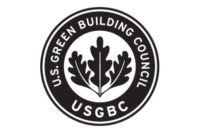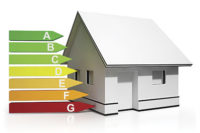The benefits that were being tossed out there by its proponents included better comfort, better indoor air quality and massive energy savings. Lots of people fell victim to the hype. As wonderful as this idea seems, some quick interwebs research reveals that these systems are expensive, sometimes create indoor air quality problems, are often incredibly difficult to control resulting in extreme occupant discomfort, and rarely result in the energy savings claimed. For some entertaining reading on this topic, check out “22 Myths About Radiant Under Floor Heating and Cooling” by Robert Bean.
Done correctly, there is some evidence that these systems work as advertised. The problem, still, is knowing how to design and install them correctly. The issues that must be addressed are many and complicated: What type of hydronic tubing? How much tubing and what diameter? What heat source, and how big? How much mortar around the tubing? What type of separation, if any, is needed between the hydronic system and the floor/slab? What flooring materials are OK to use over a hydronic system? How is that flooring attached? How is the system controlled, and what type of thermostat should be used? Designing a hydronic floor heating system isn’t easy, results are not guaranteed, and there is no single go-to source for answers to all the questions. Or is there?
A New, Old System
There is a “new” system designed and manufactured by a company called Schluter Systems. Yes, the same Schulter Systems that makes just about every tile accessory you can imagine. As a European company, Schluter has lots of experience with hydronic floor heating systems, something that is very common in European homes and buildings. In 1998, Schluter designed a unique Styrofoam board called Bekotec that supports and separates the hydronic tubing from the substrate and allows for a much smaller mass for the tubing to heat. In Europe, Schluter offers a single source solution which includes everything required except the hot water source. In the U.S., Schluter offers the board but allows the design team and contractor to source everything else—namely the mortar bed, tubing, boiler and controls. The beauty of this system is that it largely takes the guesswork out of what needs to be done, allows great flexibility with the easy and ingenious placement of the tubing, and goes down fast.
Thermal Mass—Less is More
Foam board, it turns out, is the critical component required for a successful hydronic floor heating system. Search the internet and you will find hundreds of complaints about hydronic floor heating systems not working as expected. The main problem with these systems is the amount of mass that the tubes have to heat, typically 6 inches or more of concrete and mortar. The issue is lag time—with this much mass, it takes four to six hours for the mass to heat up to the desired temperature setting, and four to six hours before the occupants begin to feel the warmth. This much mass requires a 180 degree Fahrenheit water temperature delivered from the boiler, and cannot be less than 140 degrees Fahrenheit on the return trip without causing condensation damage to the boiler. The thinking has always been that a lot of mass was necessary to make the system work. In practice, however, this has turned out to be a bad idea. Schluter has proven with their Bekotec system that only a small amount of mass is needed and needs to be thermally isolated from the supporting floor system so that the heat goes into the room, and not the floor below. The total thickness of the Bekotec mortar bed is between 2 to 3 inches, and needs a water temperature of only 85 to 120 degrees to function.
This happens also to be the exact temperature range produced by solar hot water collectors! Lag time with the Schluter system is a mere 45 minutes. The lower water temperature needed for the Bekotec system results in less expensive equipment needed to heat the water, in some cases just a standard residential water heater. Used with a ceramic tile floor covering (remember, Schluter is a company centered on ceramic tile), the system, by some calculations, is twice as energy efficient as a traditional hydronic radiant floor system.
An additional advantage with Bekotec is the acoustical isolation it provides, which can be a devilishly difficult problem to solve for hard flooring in multistory construction. Bekotec has done field testing in which its system was shown to produce an Impact Insulation Class of more than 63, where traditional systems are about half that value. The IBC establishes a minimum quality field tested value (FIIC) at 50, and some jurisdictions require at least an FIIC of 60.
Code Compliance
The only caveat to be aware of with this system is the International Building Code’s position on foam plastics in buildings (a.k.a. Chapter 26). The Bekotec system requires a minimum mortar cover of 5/16-inch, but allows up to 1-inch. To satisfy the prescriptive building code requirement, a minimum 1-inch thick mortar cover must be provided on both sides of the foam. For systems installed over concrete, problem solved. For combustible floor assemblies, Bekotec will not comply.








Report Abusive Comment